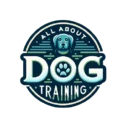Unlocking Success: 5 Techniques for Advanced Dog Training
Introduction to Advanced Dog Training
Advanced dog training goes beyond the basic sit, stand, and stay commands. It entails teaching your dog complex commands and behaviors that enhance their mental stimulation, obedience, and overall relationship with you as the owner. Dogs are inherently intelligent creatures, capable of understanding and executing complex instructions when appropriately trained.
With advanced training, dogs can learn to assist persons with disabilities, perform tricks, and even participate in dog sports like agility and obedience competitions. Before embarking on advanced training, it's important that the dog has mastered basic obedience skills.
Advanced Obedience Training
Advanced obedience training enhances your dog's discipline and responsiveness to commands. It involves commands like heel, place, off (not to jump), and quiet (stop barking). This type of training creates a better communication link between you and your dog and makes it easier to manage your dog in various scenarios.
Heel
The heel command is useful, especially during walks. It trains the dog to walk directly beside or behind you rather than pulling at the leash or walking ahead. It’s a sign of respect and submissiveness.
Place
The place command trains your dog to go to a designated spot and stay there until released. This is useful when you have guests or want your dog confined to a specific area.
Off
This command is employed to stop undesirable jumps on people or climbing on furniture.
Quiet
Teaching your dog a quiet command can control excessive barking.
Advanced Trick Training
Advanced trick training goes a step further from the simple tricks in basic training, like paw or roll-over. Some advanced tricks include fetch, play dead, speak/bark on command, and backwards weaving through your legs.
Fetch
Fetch is not just a fun game, but also a complex command where a dog is instructed to grab an object and bring it back to you. This combines a sequence of commands and behaviors that are all trained at once.
Speak/Bark on Command
Bark or 'speak' commands are another way to harness your dog's natural instincts in a manageable way. It enhances communication between you and your dog.
Backwards Weaving through Legs
This trick is a complex command that challenges both the mental and physical capabilities of your dog. It involves the dog walking backwards while weaving through your legs. It improves their agility while also mentally stimulating them.
Advanced trick training enhances the bond between you and your dog as it requires more one-on-one training sessions, and it's great for showcasing your dog's intelligence and obedience.
Training Techniques for Advanced Dog Training
Several approaches can be employed in advanced dog training, including positive reinforcement, clicker training, and mirror training.
Positive reinforcement is the process of giving the dog a reward to encourage the behavior you want. Rewards can be treats, toys, or praises. This method strengthens the bond between you and your dog and encourages the repetition of good behaviors.
Clicker training is a method of positive reinforcement where a clicker is used as a signal to mark the moment the right behavior is performed and then immediately followed by a reward. The 'click' sound becomes a powerful tool that your dog associates with good behavior.
Mirror training, on the other hand, leverages the dog's natural instincts to learn by mirroring their owner's actions. This training method requires that the owner behaves in a manner that they want the dog to emulate.
Whichever method you use, consistency and patience are key to successful advanced dog training.
Questions Often Asked About Advanced Dog Training
At what age should advanced training begin?
After mastering basic obedience (around six months old), a dog can start advanced training. But remember, dogs are individuals and mature at different rates.
What breeds are best suited for advanced training?
Though some breeds might pick up training more quickly than others, any breed can receive advanced training. It's more about individual dog temperament, persistence, and technique applied.
Is there such a thing as too much training?
Yes, overtraining can lead to a stressed and unsettled dog. Ensure to have rest periods and balance training with play and relaxation.
Conclusion
Advanced dog training requires patience, consistency, and an understanding of dog behaviors. It goes beyond basic commands, enhancing the dog's mental capabilities and physical agility. It strengthens the bond and communication between you and your dog. Always remember, each dog is unique and will progress at their individual pace, and the goal is to ensure both you and your dog enjoy the process.





